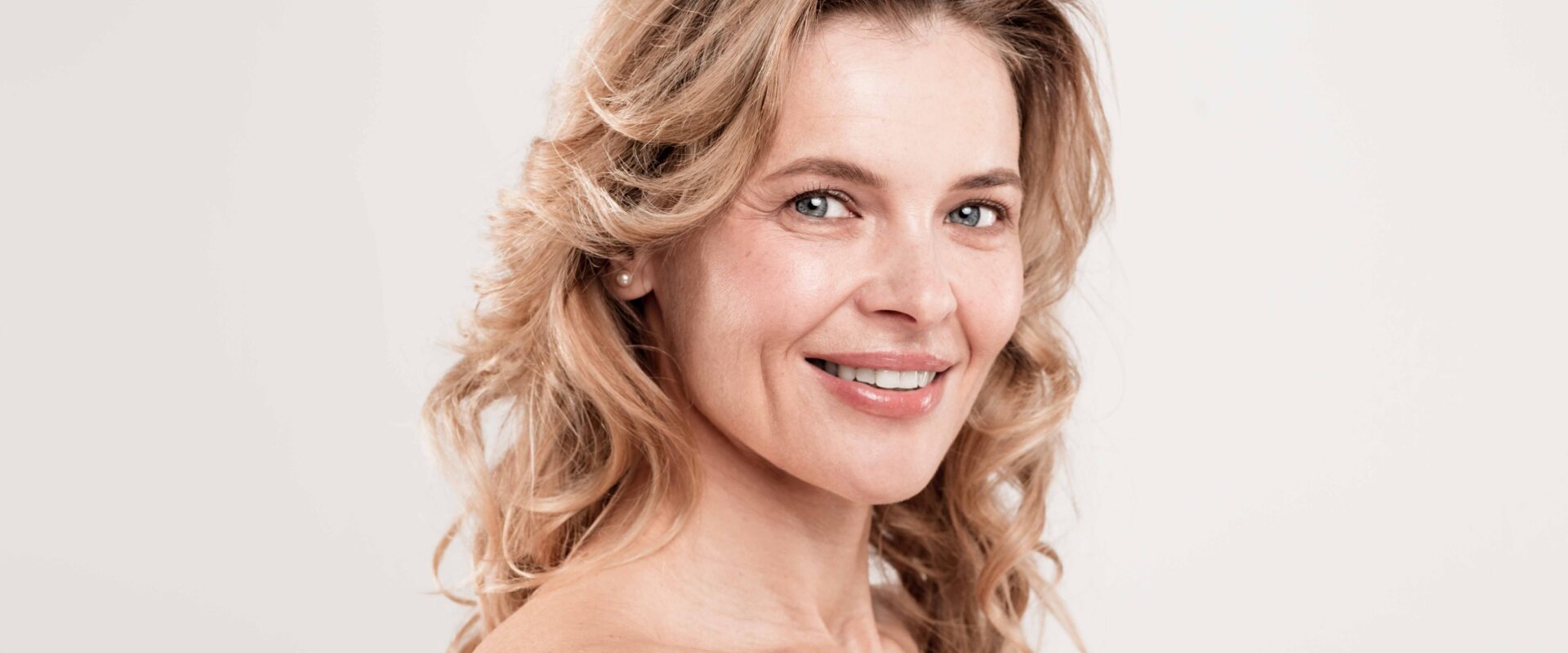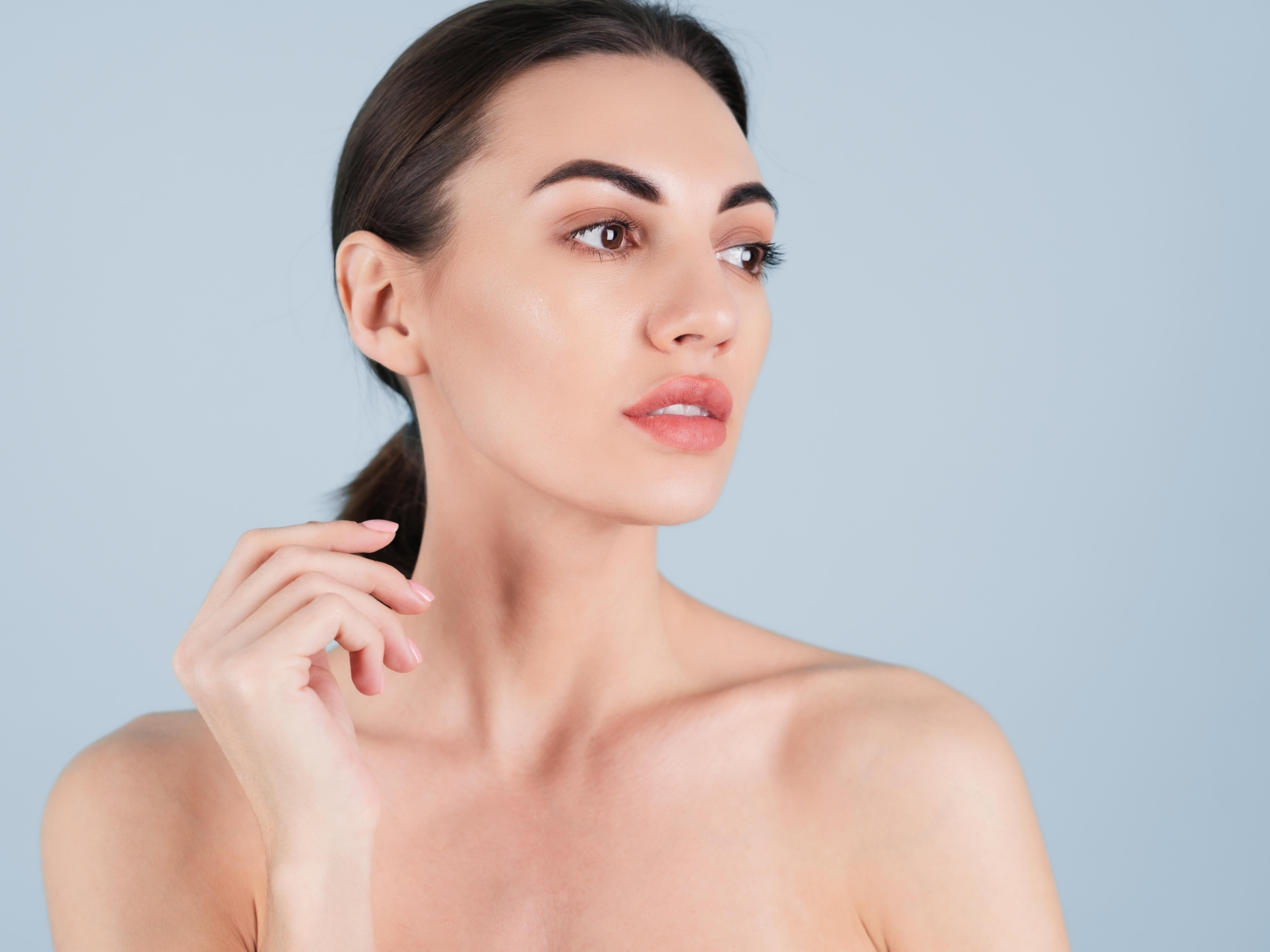Thread lifting: wrinkle treatment for firmer skin
Thread lifting is a minimally invasive method of skin tightening that is mainly used in the facial area. In this method, self-dissolving threads are placed under the skin to lift sagging facial features. The threads have tiny barbs that prevent them from slipping. Compared to other methods, the skin is only exposed to minimal stress during thread lifting. The method is painless and can be performed without invasive surgery.
Quick Facts
- Duration of intervention
- approx. 45 min
- Anesthesia
- local anesthesia
- Type of operation
- outpatient
- Clinic
- Wiesbaden
- Aftercare
- Refrigerate for some time
- Sport
- 48 hours
- Socially acceptable
- few hours
- Workable
- directly after surgery
Who is the thread lift suitable for?
Thread lifting is a non-surgical method of skin tightening and facial rejuvenation. It may be suitable for patients who show mild to moderate signs of skin sagging and ageing:
Mild to Moderate Skin Sagging. Thread lifting is particularly effective for people with mild to moderate skin laxity. It can help to tighten loose skin and improve the contours of the face, neck or other areas of the body.
Wrinkles and fine lines. Individuals with fine lines and wrinkles, particularly around the cheeks, jawline or neck, could benefit from a thread lift.
Seeking non-surgical rejuvenation. Thread lifts are a minimally invasive alternative to surgical procedures such as facelifts. It could therefore be suitable for individuals looking for a non-surgical method of skin tightening and rejuvenation.
Desire for quick results with minimal downtime. Compared to surgical procedures, thread lifts typically offer faster results with minimal downtime. Many patients are able to return to their normal activities quickly after treatment.
Relatively good health. Suitable patients for thread lifting are usually in good health. If there are health restrictions or contraindications, we may advise against treatment.
Realistic expectations. Patients should have realistic expectations of the results of thread lifting, thread lifting can improve the signs of aging well. However, the results are not as pronounced as with surgical procedures.
In a preliminary consultation, we clarify the patient's individual needs and goals and determine whether thread lifting is the right option.
Thread lifting explained: technique, application and effects
The thread lift is a minimally invasive procedure that is typically performed in an outpatient setting, such as an aesthetic clinic or the office of a qualified physician. Here are the basic steps of how the thread lift is typically performed:
Pre-treatment consultation. Treatment begins with a preliminary examination and consultation to discuss the patient's individual expectations and desires. We create a treatment plan tailored to the specific signs of skin laxity and the desired results.
Marking of the treatment areas. Before the treatment, the areas where the threads are to be placed are marked. This is often done while standing or sitting so that the doctor can assess the natural sagging and the best positions for the threads.
Disinfection and anesthesia. The skin in the treatment area is thoroughly disinfected. Depending on the patient's individual preferences and the doctor's recommendations, a local anaesthetic or numbing cream may be applied to minimize any discomfort during the treatment.
Suture placement. After anesthesia, the doctor places the sutures through small puncture points in the skin. The sutures are equipped with tiny barbs that grip into the tissue and lift it. The number of stitches placed and their position depend on the patient's individual needs and the aims of the treatment.
Adjusting the sutures. After the sutures are placed, they are adjusted to achieve the desired tightening and lifting. This can be done by pulling on the stitches to tighten the surrounding tissue.
Completion and aftercare. Once suture placement is complete, the skin is thoroughly checked and the patient is given instructions for aftercare. This may include avoiding certain activities or applying cooling compresses.
Treatment with thread lifting is usually relatively quick and does not require the lengthy recovery time often associated with surgical procedures. Results can be visible immediately and patients can return to their normal activities after treatment.
Advantages of thread lifting
Thread lifting offers various advantages as a minimally invasive method for skin tightening and facial rejuvenation.
Stimulation of collagen production. The threads used can stimulate collagen production in the skin. Collagen is an important structural protein that is responsible for skin firmness and elasticity. Natural collagen production can contribute to an improved skin appearance in the long term.
Long-lasting results. Although thread lifts are not permanent, the results can last for several months to a year or longer, depending on the type of threads used and individual factors.
Improvement in skin texture. In addition to tightening the skin, thread lifting can also improve skin texture by reducing fine lines and wrinkles.
Immediate results. The results of thread lifting are usually immediately visible. The skin is tightened and there is an immediate lift in the treated areasMinimal downtime. Compared to surgical procedures such as a facelift, the downtime after a thread lift is minimal. Most patients can return to their normal activities immediately after treatment.
Low risk and side effects. Thread lifts are generally safe, and the risk of serious side effects is low. The most common side effects are mild swelling, redness or bruising at the injection sites, which usually subside within a short time.
Applicability to different areas of the body. Thread lifts are not only applicable to the face, but can also be used on other areas of the body such as the neck, décolleté or body contours.
Minimally invasive. As thread lifts are minimally invasive and only require small incisions, there is less trauma to the tissue compared to surgical procedures.
Customizability. The thread lift can be customized to the patient's individual needs and goals. The type of threads used and their placement can vary depending on the specific signs of skin laxity.
Risks and side effects of thread lifting treatment
Although thread lifting is generally considered a safe and minimally invasive procedure, it can still involve certain risks and side effects.
Bruising and swelling. Short-term swelling, bruising or slight redness at the injection sites are common side effects after a thread lift. However, these can usually subside within a few days to weeks.
Infections. Although infections are rare, there is a small risk with any procedure that breaks the skin. Careful aseptic technique during treatment minimizes the risk of infection.
Suture migration. In some cases, the sutures used may shift or migrate. This could lead to undesirable results. It is important that the sutures are placed precisely by an experienced doctor to minimize this possibility.
Asymmetry or irregularities. There is a risk of asymmetry or irregularities in the treated areas. Precise placement of the sutures is important to ensure even tightening and lifting.
Allergic reactions. Although allergic reactions to the stitches are rare, hypersensitivity reactions may occur in some cases. It is important that the attending physician carefully reviews the patient's medical history.
Rippling of the skin or visible stitches. In rare cases, rippling of the skin or visible threads under the skin may occur. This may be due to improper placement or insufficient tightening.
Unsatisfactory results. The results of thread lifts can vary, and there is a risk that the tightening achieved will not meet the patient's expectations.
Changes in sensation. In some cases, temporary changes in sensation, such as numbness or tenderness, may occur in the treated areas.
Most of these side effects can be minimized by adhering to medical standards. Before deciding on a thread lift, a detailed consultation is essential to assess the individual's health, discuss potential risks and ensure that the patient has realistic expectations.
Frequently asked questions about thread lifting
The duration of results varies from case to case, but generally the effects last from several months to a year or longer. Since thread lifts are not permanent, touch-up treatments may be required to maintain the effects over time.
Although thread lifts are considered safe, side effects such as swelling, bruising, temporary numbness and rarer risks such as infection or thread migration can occur. Thorough pre-examination, precise placement of the threads and medical treatment standards minimize these risks.
The treatment can involve minimal discomfort, and many patients report only mild pain or discomfort. We use local anesthesia to make the procedure as comfortable as possible. Recovery time after a thread lift is usually short, and most patients can return to their normal activities immediately after treatment.



